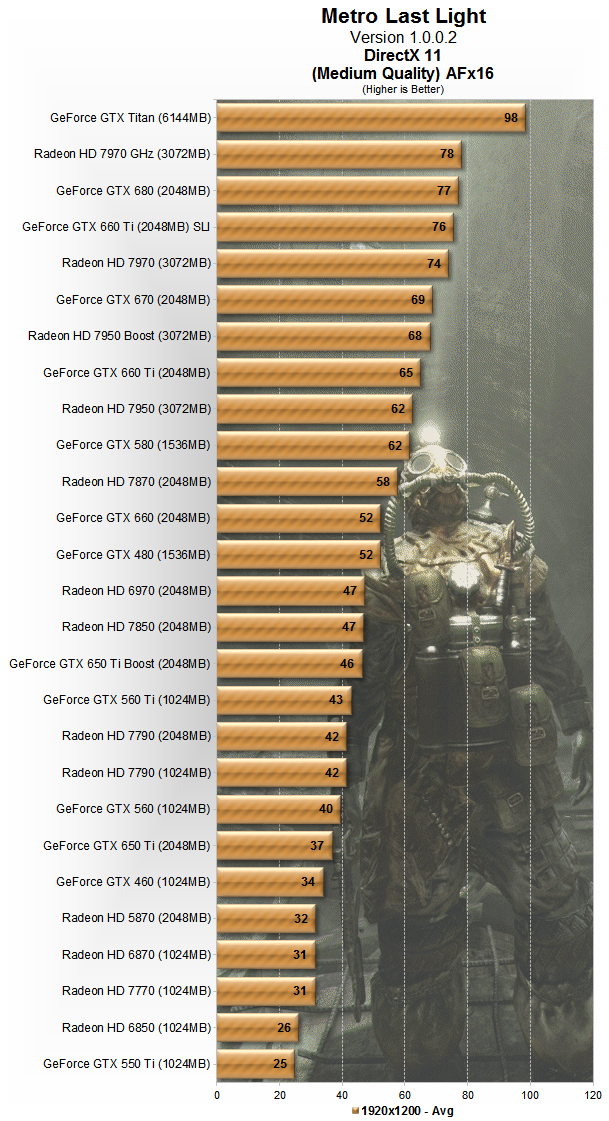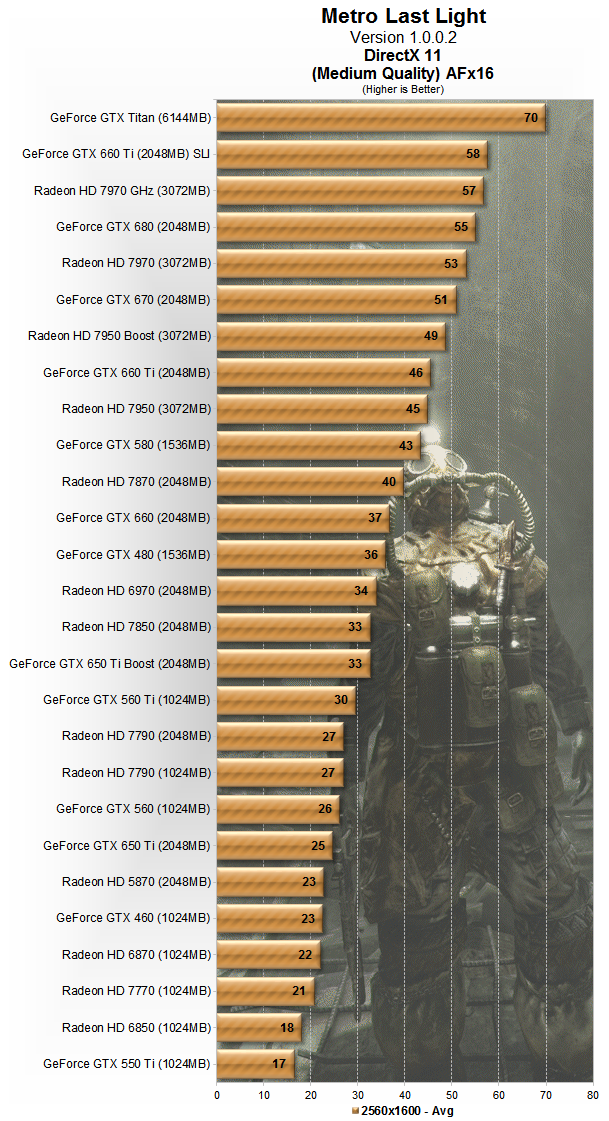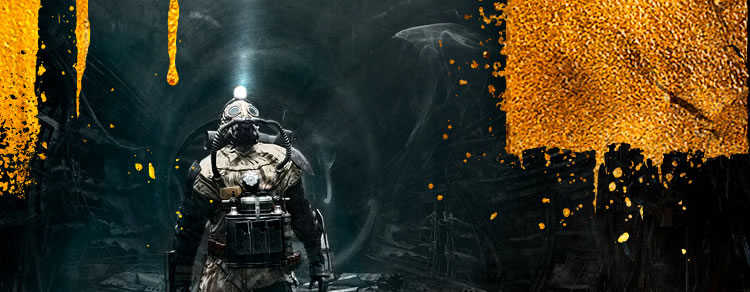Medium Quality Performance

Using medium quality settings at 1680x1050 we see that the GeForce GTX 660 averaged 60fps, which is roughly the same result turned in by the old GTX 480. AMD required the Radeon HD 7870 to break the 60fps barrier though it did so easily with 68fps. Going beyond the GTX 660 or 7870 on these settings can be considered overkill.
Below these cards we have the Radeon HD 7850 with 56fps and the GeForce GTX 650 Ti Boost with 54fps, which was the same frame rate produced by the old Radeon HD 6970.
Current generation budget graphics cards such as the GeForce GTX 650 Ti and Radeon HD 7770 provided rather poor performance. While the 43fps and 37fps produced by these cards is considered playable, we were surprised by how demanding Metro: Last Light was on them using relatively low settings.

At 1920x1200 graphics cards such as the GeForce GTX 660 drop around 8fps, meaning more serious GPUs are required to crack the 60fps mark. This called for either the GeForce GTX 660 Ti (65fps) or the Radeon HD 7950 Boost (68fps).
Budget cards such as the Radeon HD 7770 (31fps) and GeForce GTX 650 Ti (37fps) barely got by, though Nvidia's solution did fare a lot better.

Turning the resolution up to 2560x1600 rendered most of the lower-end graphics cards useless. The Radeon HD 7790 for example averaged just 27fps in either 1GB or 2GB varieties. The GeForce GTX 650 Ti Boost managed just 33fps as did the Radeon HD 7850.
For a better experience we recommend using at least the GeForce GTX 660 which averaged 37fps, or the Radeon HD 7870 at 40fps.
Cracking 60fps was no easy task at this resolution. It took the mighty GeForce GTX Titan to do so. Even a pair of GTX 660 Ti SLI graphics cards couldn't achieve the feat, falling just short with 58fps on average.
